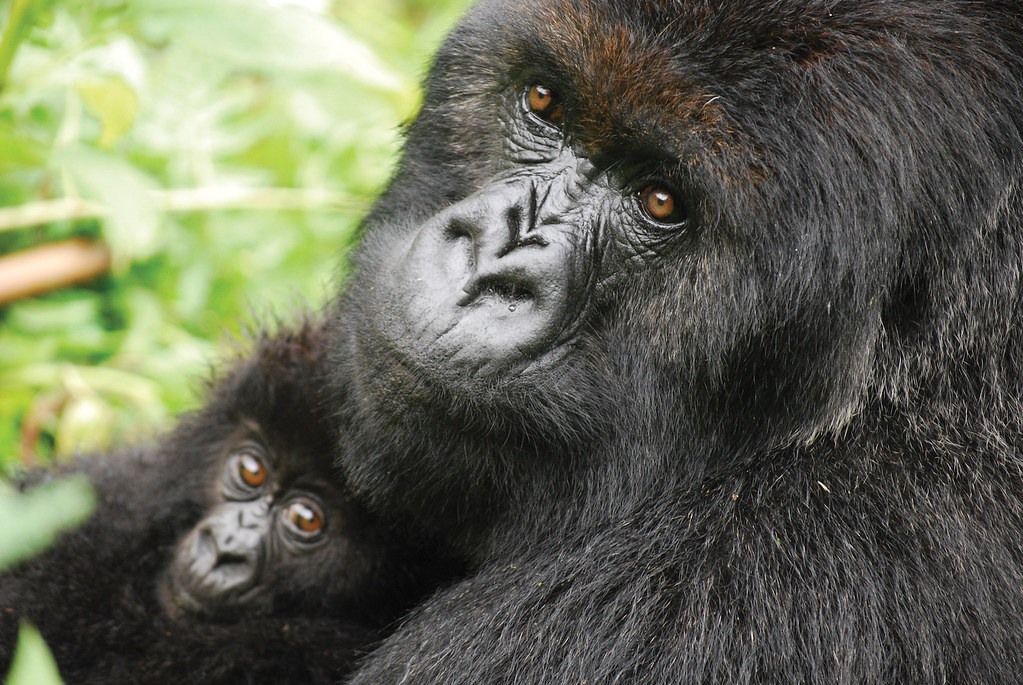Uganda is best known for its concentration of primates, including its most celebrated residents – half the world’s remaining mountain gorilla population.
Gorilla trekking is high on the wish list for many travellers, and Uganda is one of few countries where it is still possible to observe gorillas in the wild. But the recent move by Rwandan authorities earlier this year to implement a significant price hike for compulsory gorilla trekking permits from US$750 to US $1,500 per person for all visitors has added significantly to Uganda’s appeal, with Ugandan permits considerably more affordable at just US$600 per person.
One of the best places to see gorillas in Uganda is the Bwindi Impenetrable Forest, a UNESCO World Heritage Site in the country’s southwest. Bwindi is home to just over half the world’s last surviving mountain gorillas, as well as the spectacular Sanctuary Gorilla Forest Camp. Comprising just eight tents, it is one of the most remote and atmospheric camps in Africa. Frequently visited by gorilla families due to its unique location, it is the perfect base for a once in a lifetime encounter with mountain gorillas.
We asked Michael McCall, what guests staying at a Forest Camp can expect when embarking on a gorilla trekking trip.
Early Rises!
“Expect a wake up call at around 6.30am, followed by hearty breakfast, after which you will be escorted to the starting point for the gorilla trek, conveniently located just a five minute walk from Sanctuary gorilla Forest Camp.”
“This is where you will be introduced to your guides for the day and receive a safety briefing ahead of the trek. You’ll be one of just eight trekkers, and you’ll be accompanied by a Uganda Wildlife Ranger plus two armed rangers (to fend off any rogue forest elephants). There’s also a porter for each guest, who will be carrying everything you need during the trek, including water and a packed lunch.
Time to trek.
“Every trek is different, and can last between four and 10 hours, depending on the location of the gorillas. The terrain is varied and may involve climbing up and down some quite mountainous trails. Along the way, your guide will be looking (and listening!) out for clues from the surrounding forest, including scouring the foliage for droppings, left over food and knuckle fingerprints. The aim is to find out where the gorillas have spent the night, as they tend to only travel up to 1km per day and are likely to still be nearby the nest.
“Once you’ve located your chosen gorilla family, you’ll have around an hour to observe them in their natural habitat. And of course, the rangers are extremely knowledgeable and will be on hand to answer all your questions and explain gorillas’ behaviour.
“While there are certainly restrictions on how close you can get to the gorillas (10M) they can be as curious as you are, so be prepared to say hello!
Welcome home.
“Once your magical hour has come to an end, it’s time to head back to camp where your drink of choice and a much-welcomed refreshing towel will be waiting to welcome you home.
“The laundry team are also on standby to clean boots and clothes for your next adventure. And for those with stiff muscles, a visit to the masseuse in the mini spa for a well-deserved post trek massage is a must.
“After dinner it’s time to kick back, relax and share your stories around the campfire!”
Trek Essentials.
For anyone planning a gorilla trek, here is Michael’s list of essential items you should definitely not leave home – or camp, without!
· A good quality waterproof camera.
· A poncho or rain jacket as it can rain heavily, even in the dry season.
· A walking stick, which will be provided by the Camp.
· Gloves which come in useful for grabbing bushes, or sliding downhill on the seat of your pants as you never know where your trek might take you!.
· Bug repellent. DEET strength.
· A good-quality, solid – and comfy hiking boots.
· Cool, comfortable clothing in muted colours. Michael recommends long sleeves, trousers, long socks and gaiters to keep bugs out and prevent scratches.




